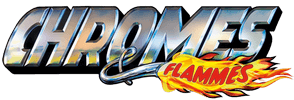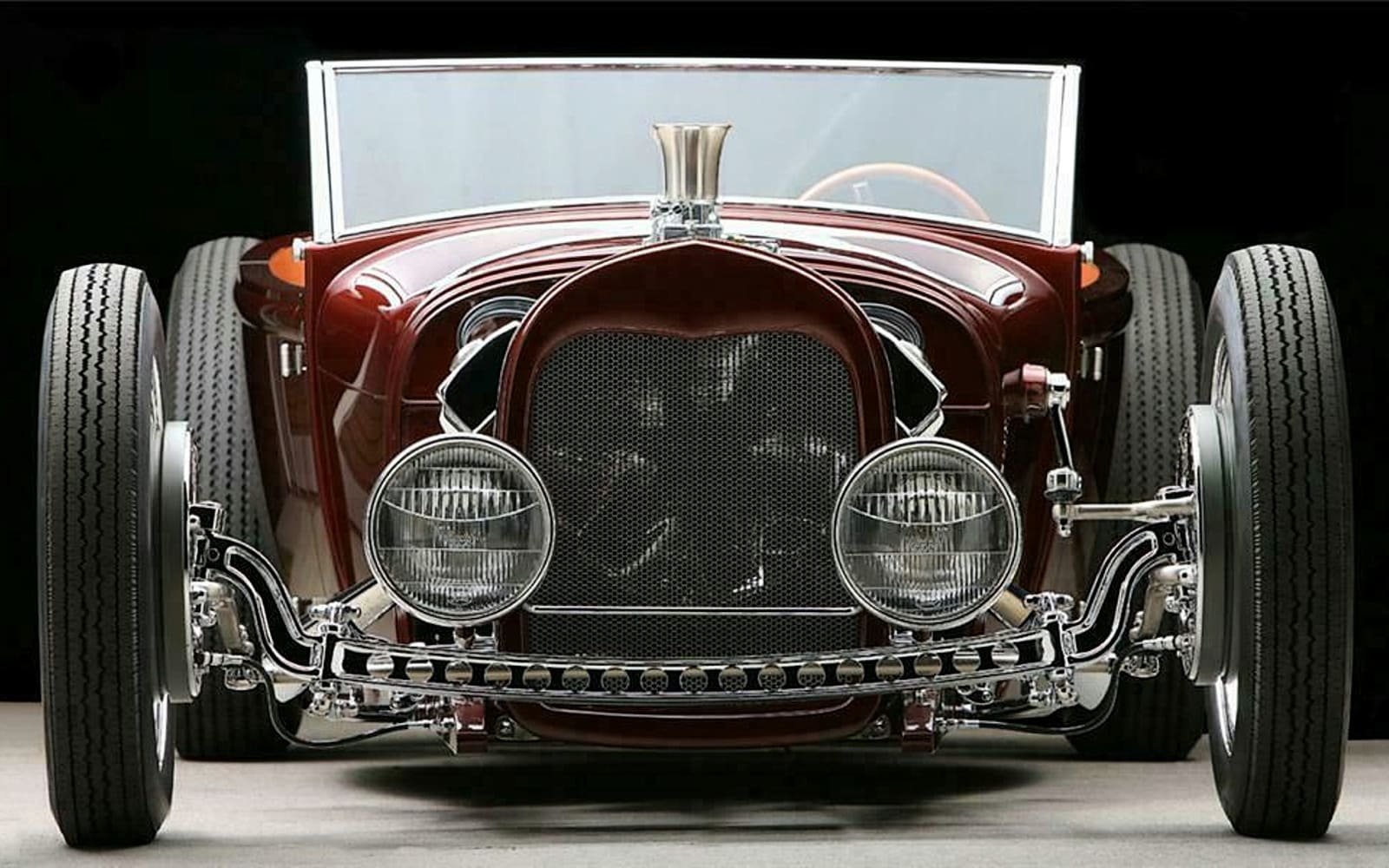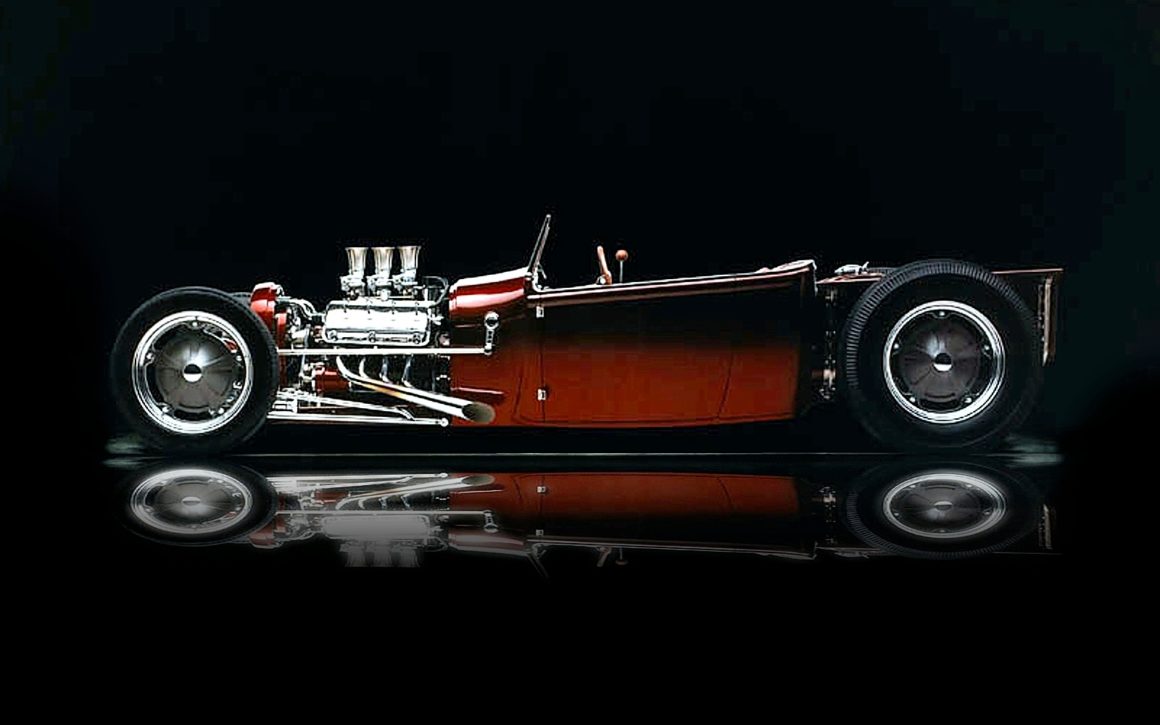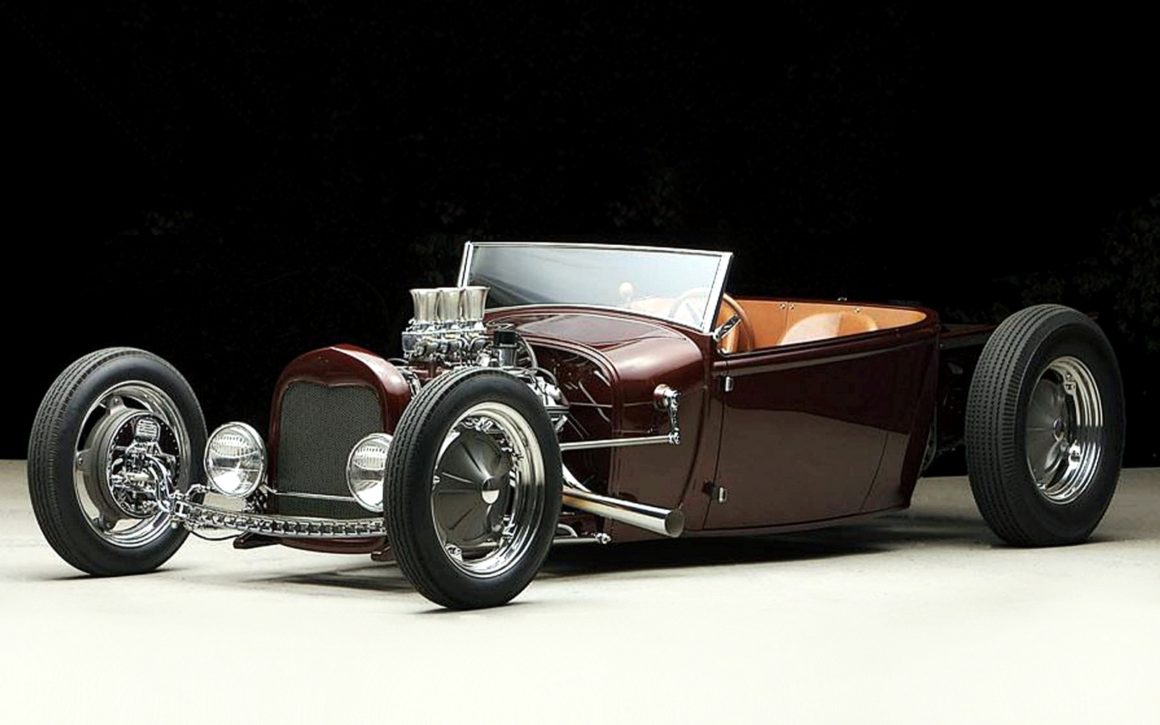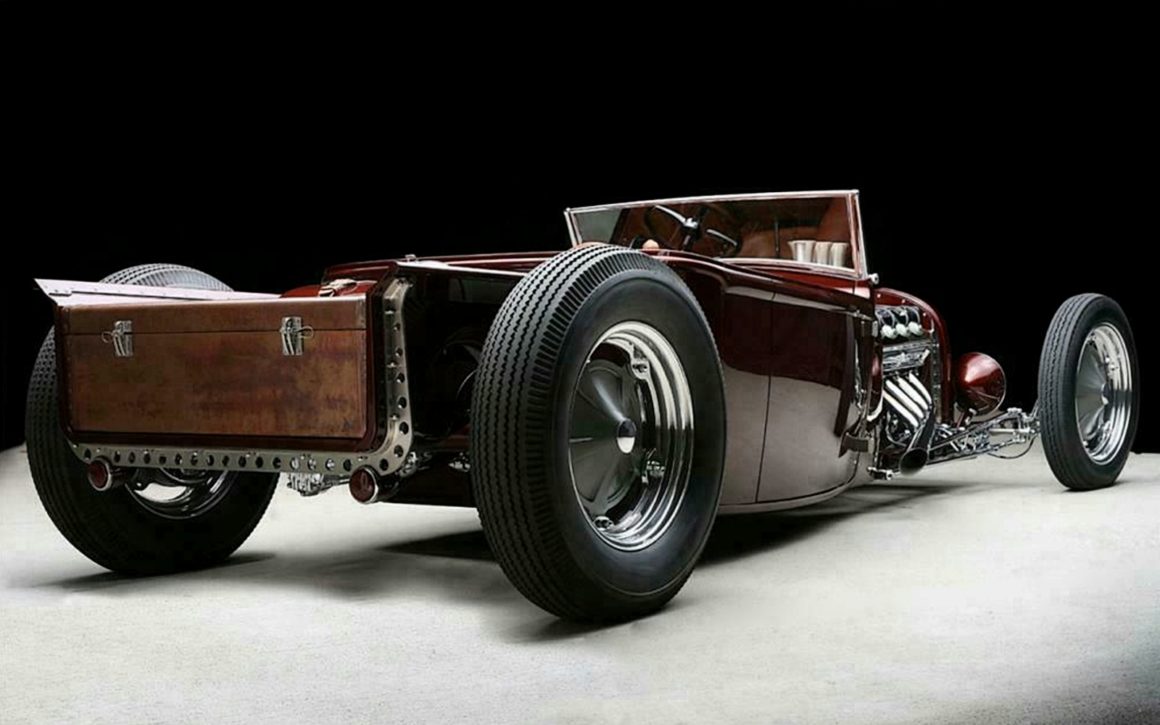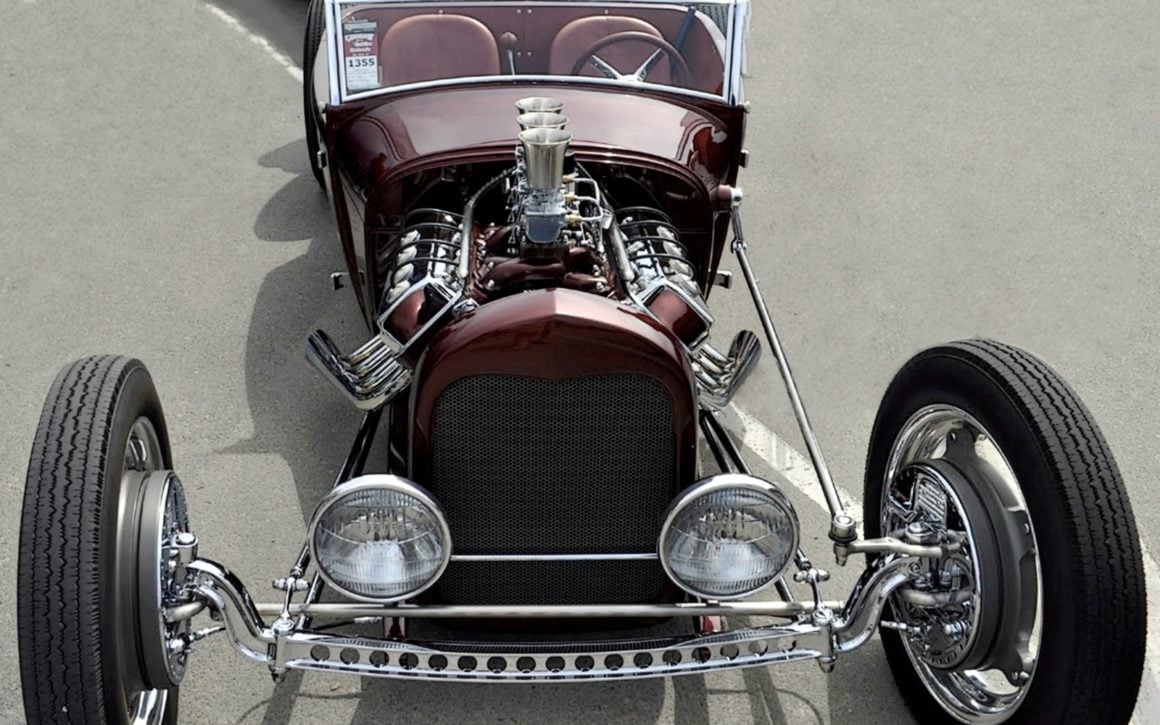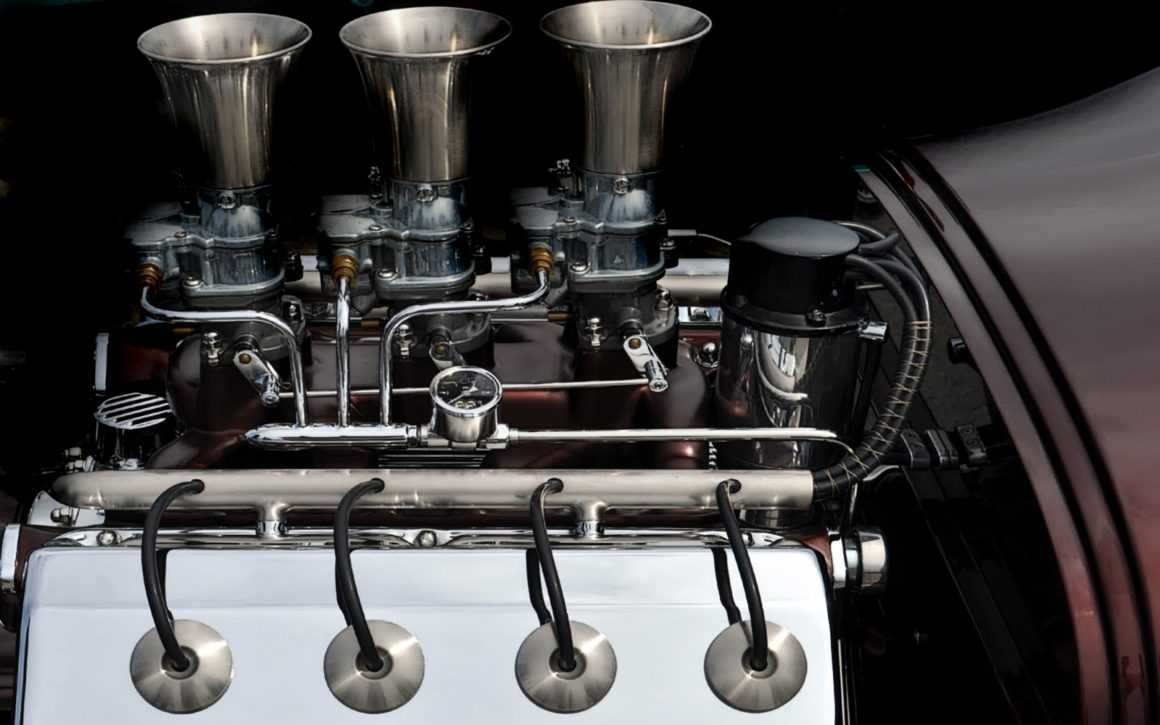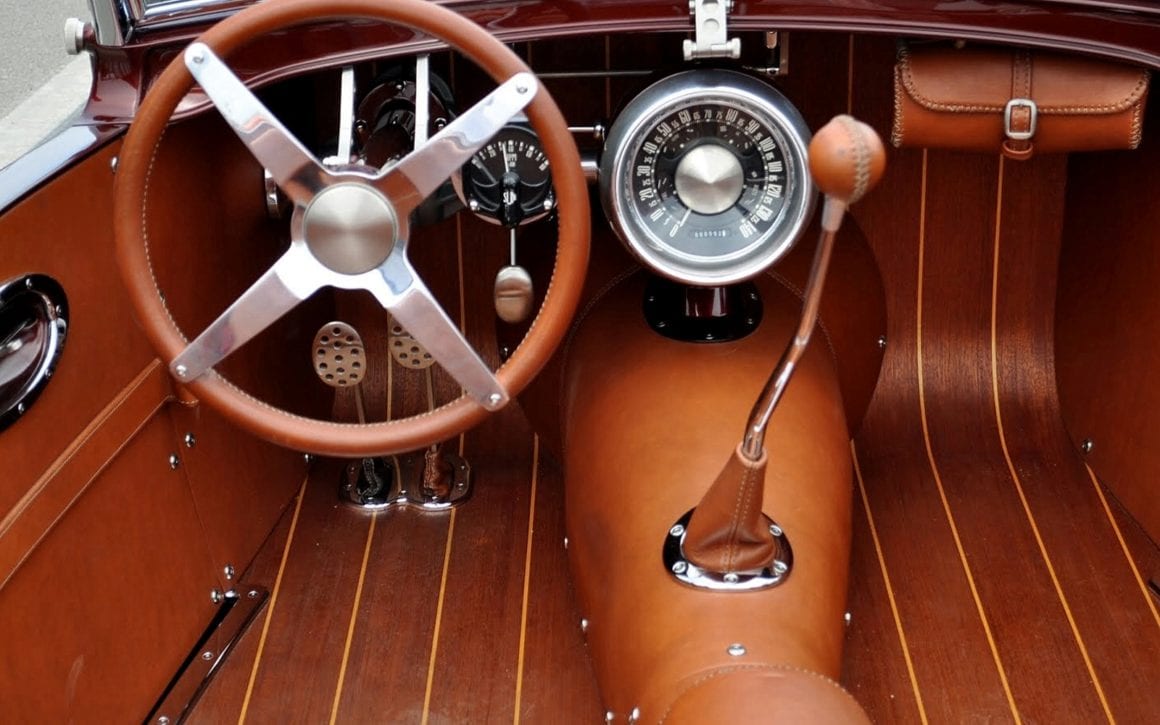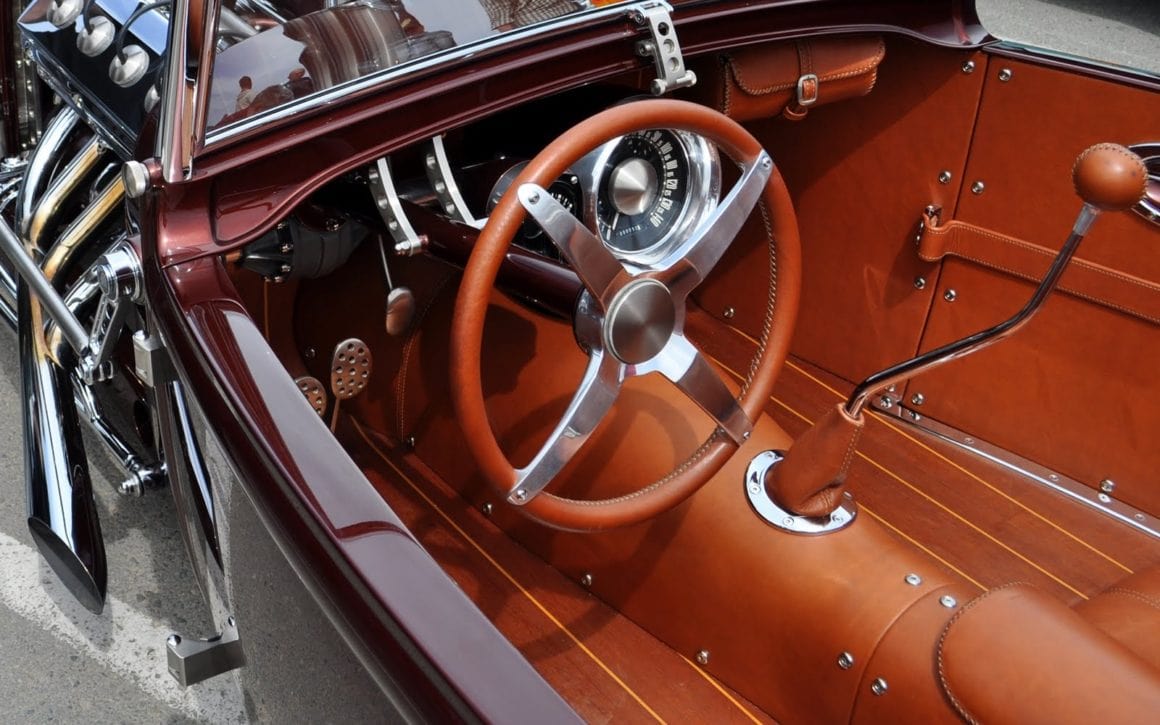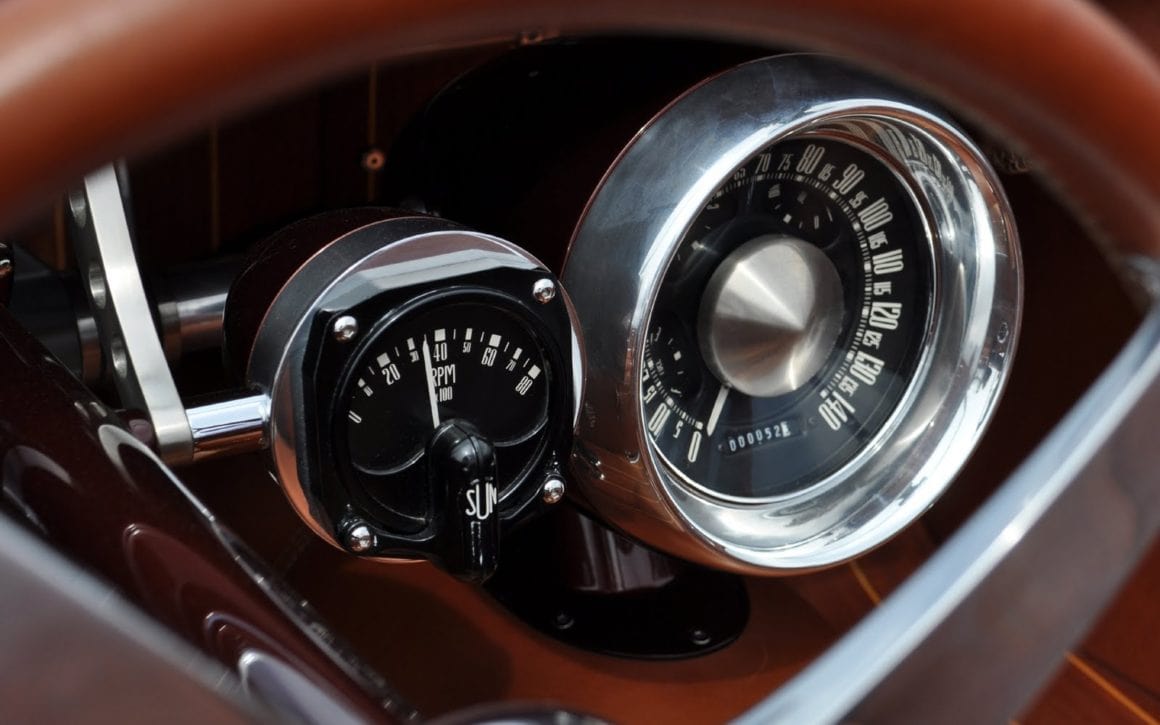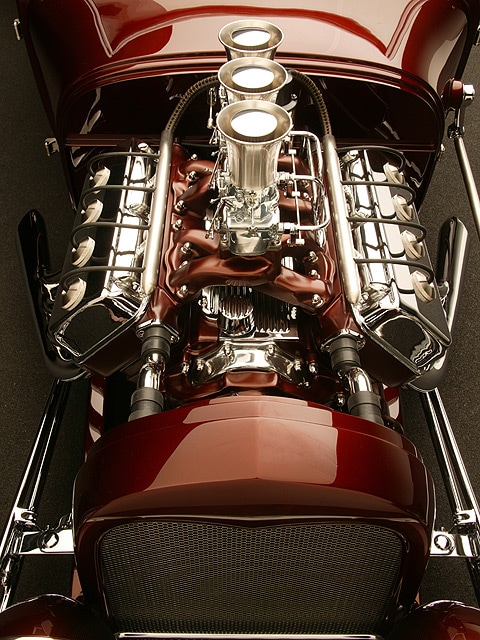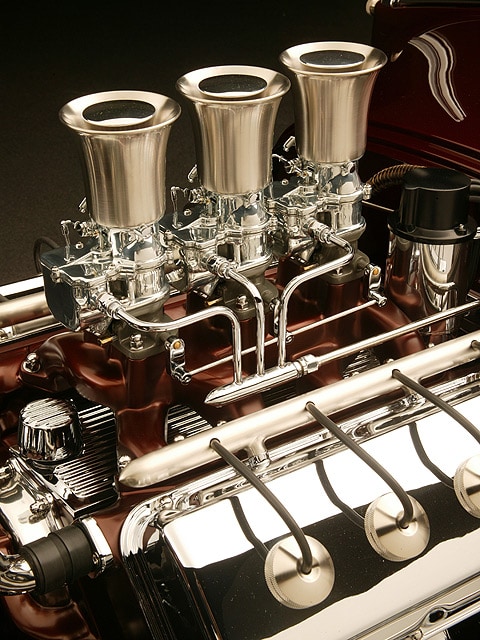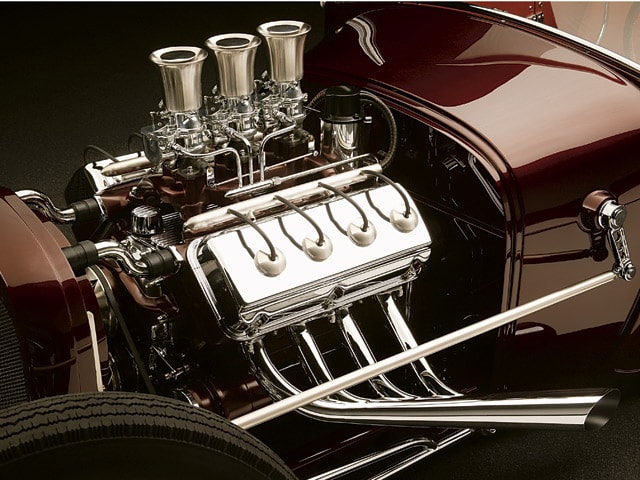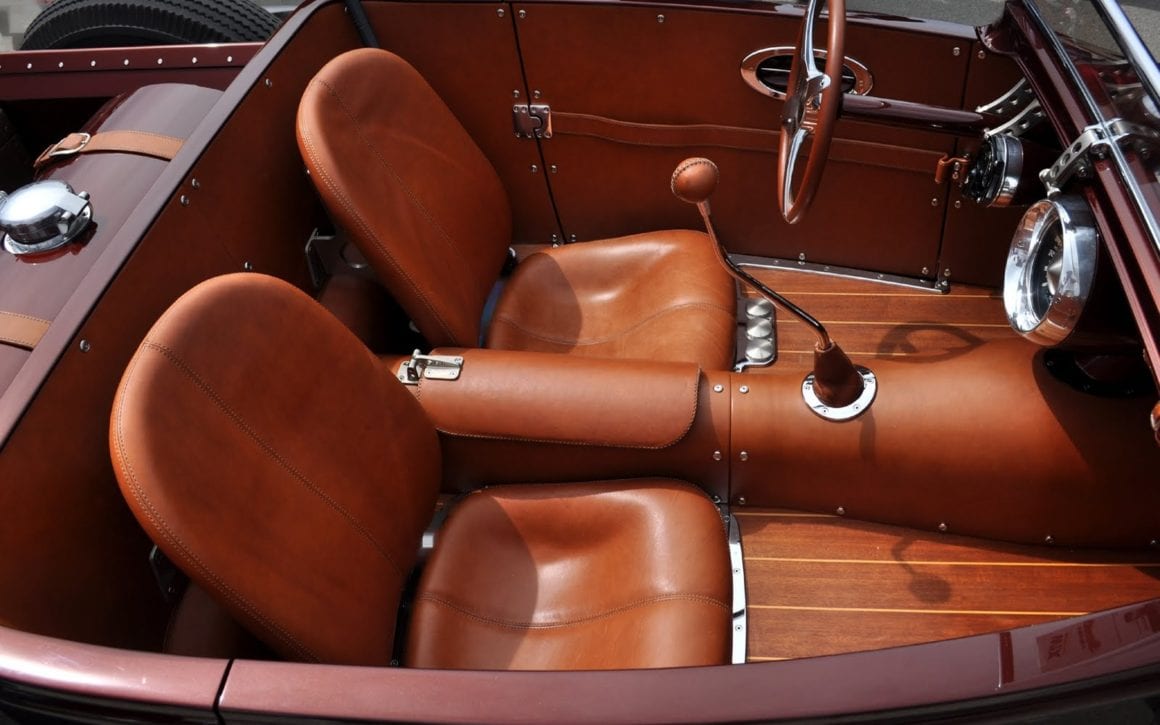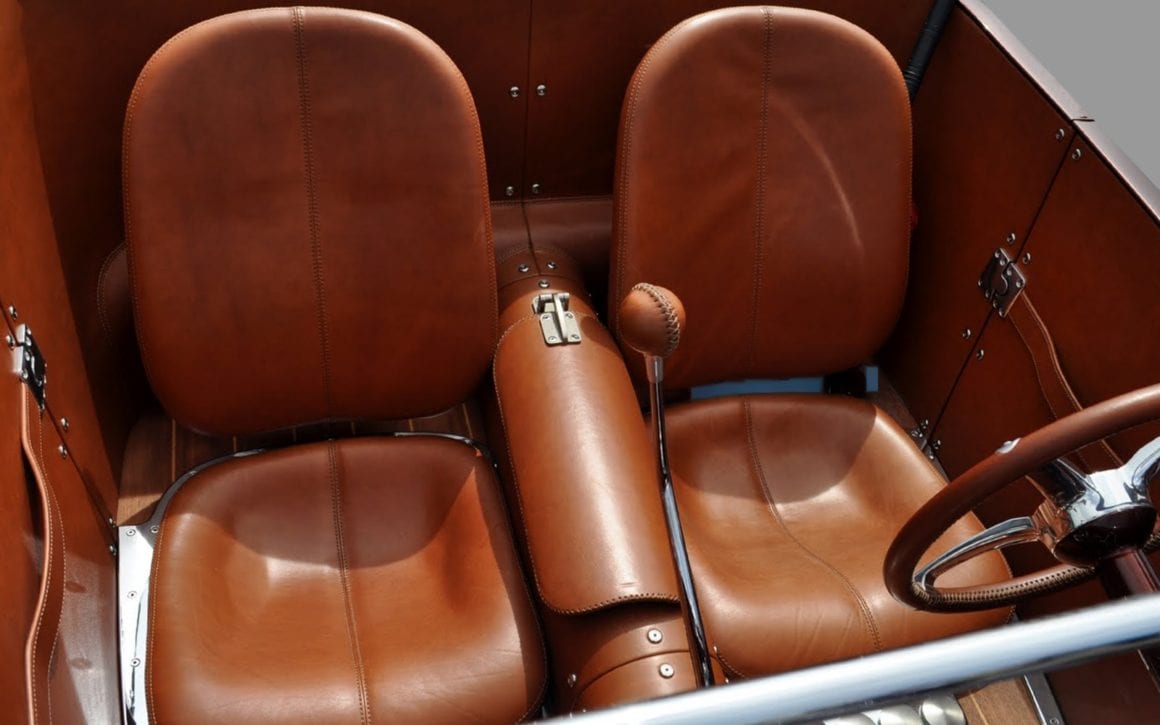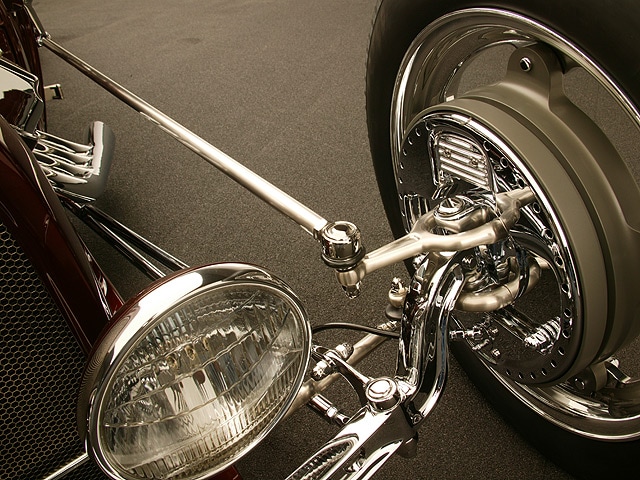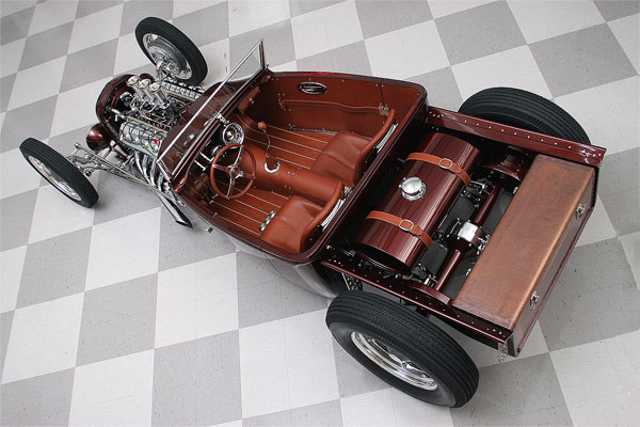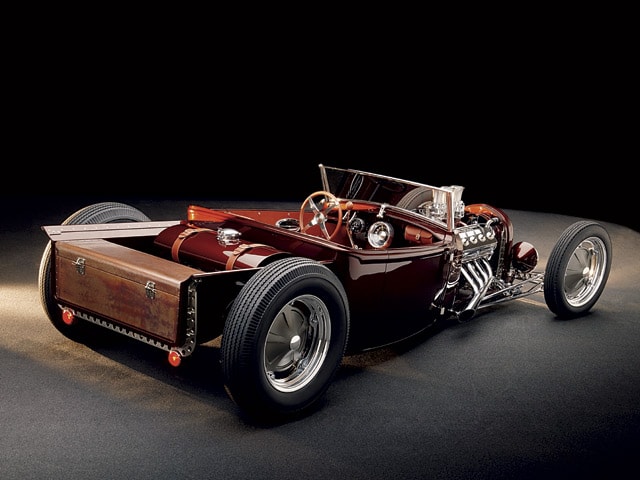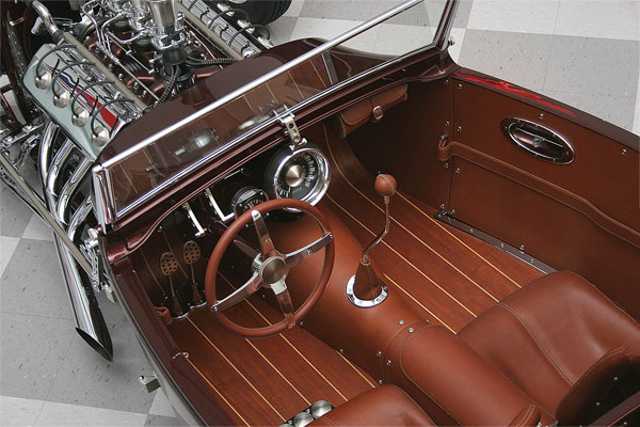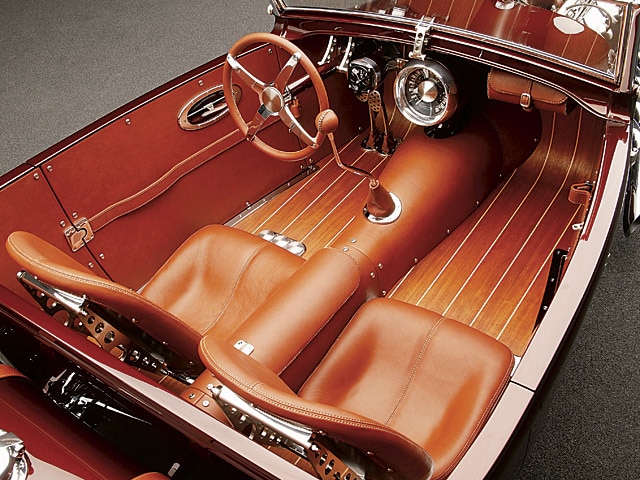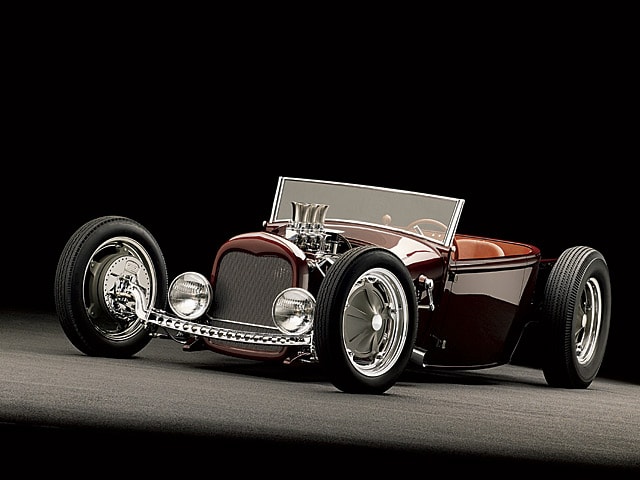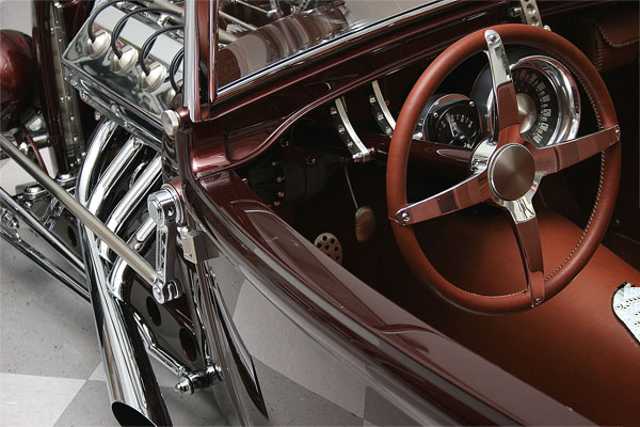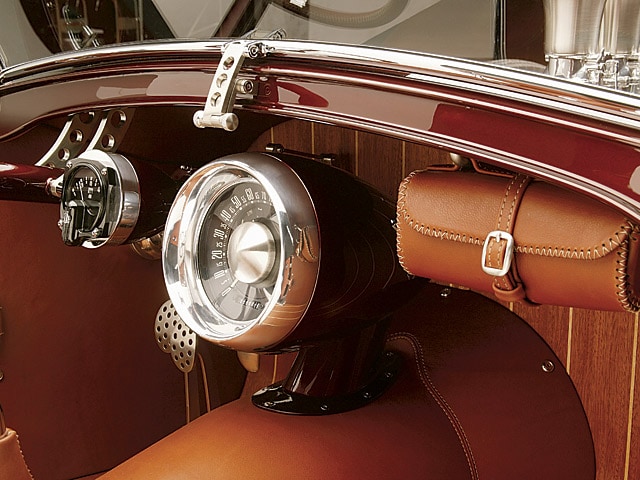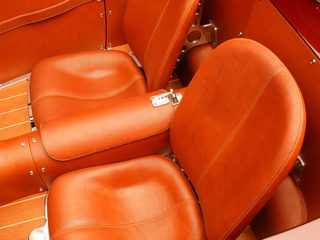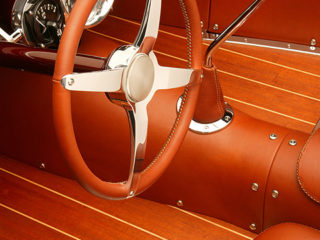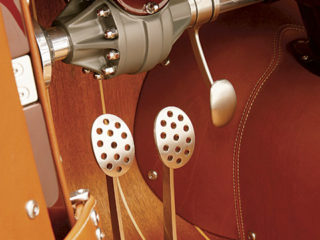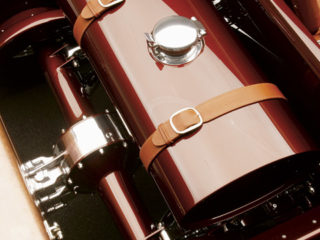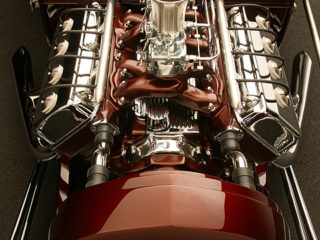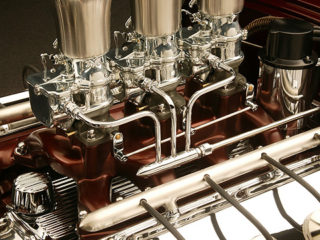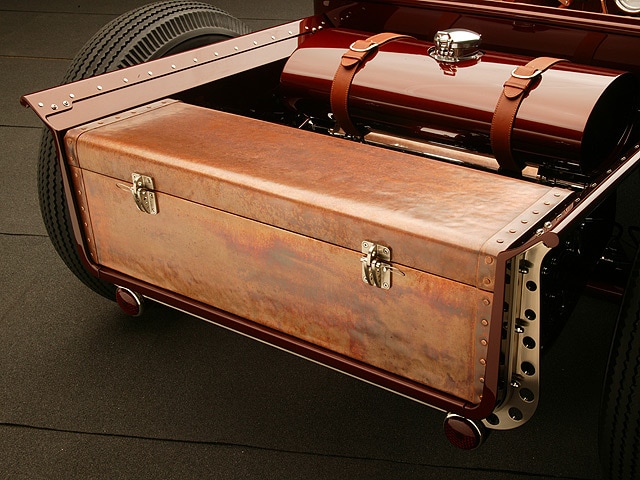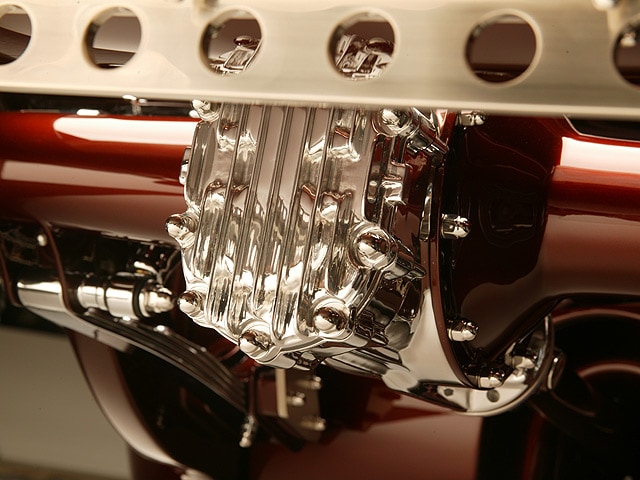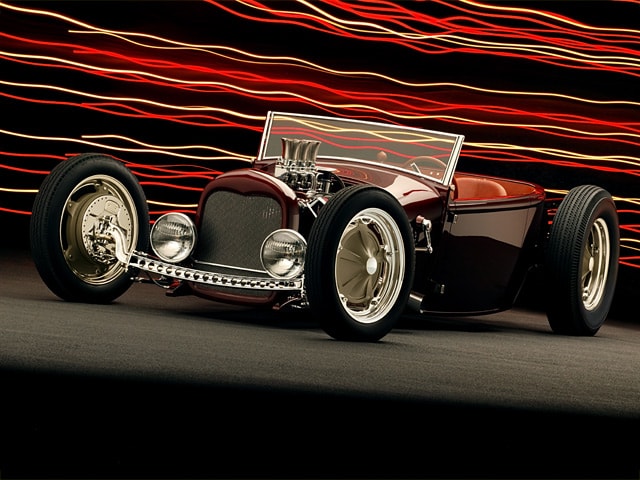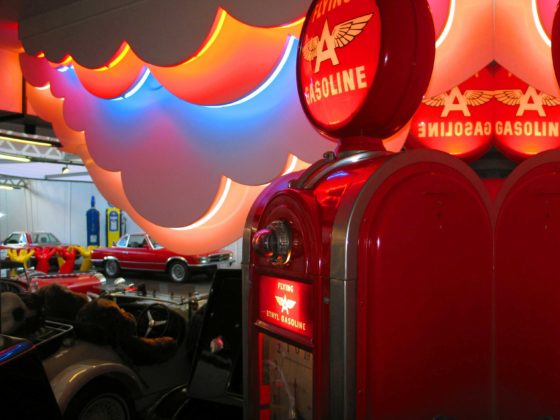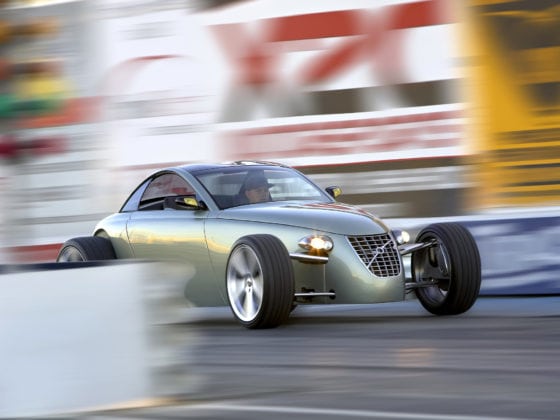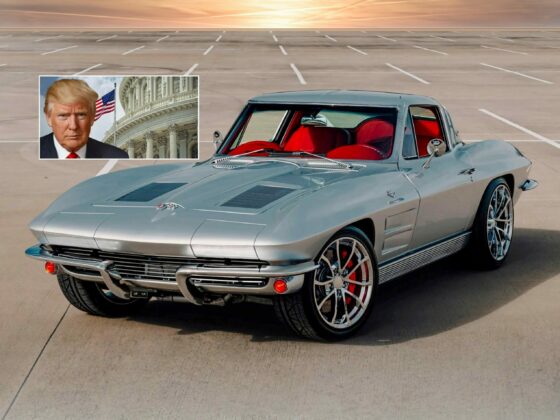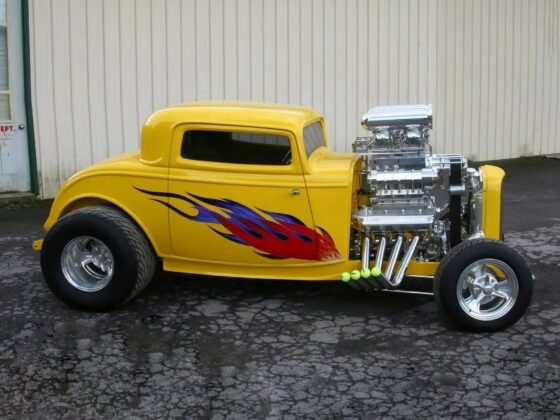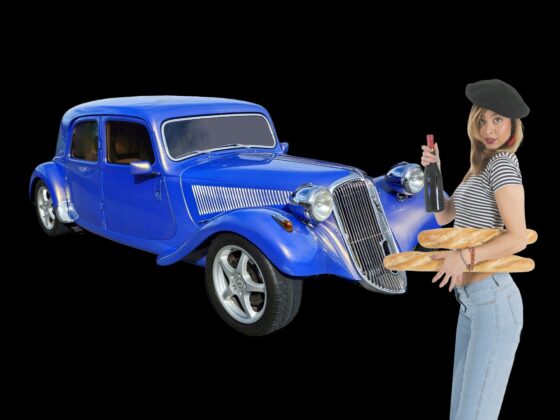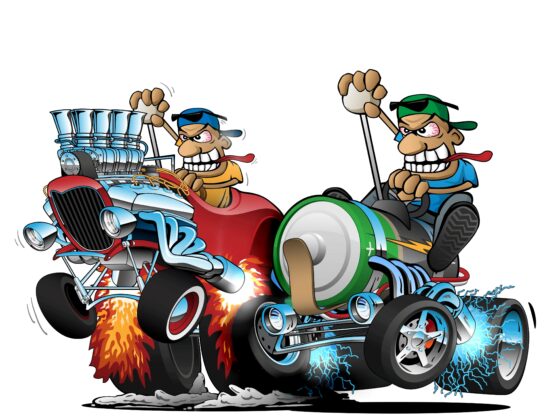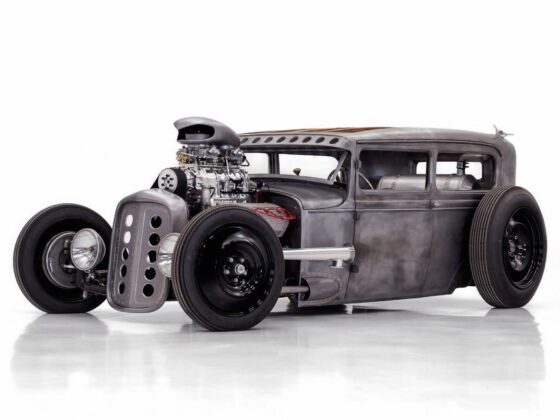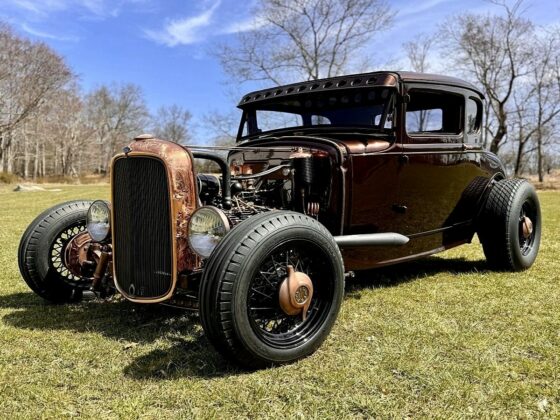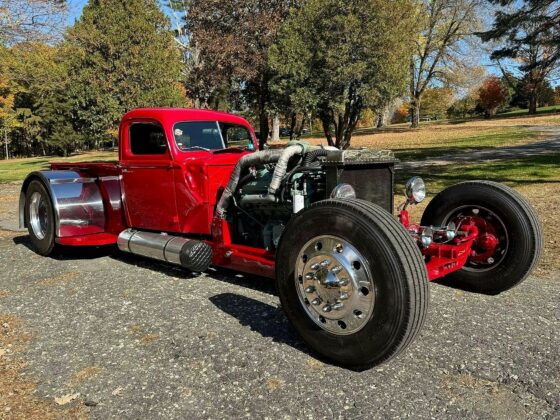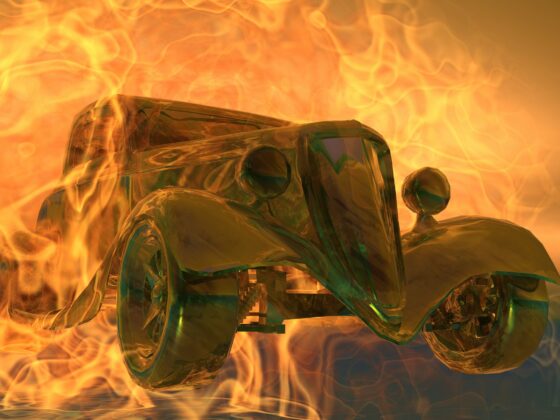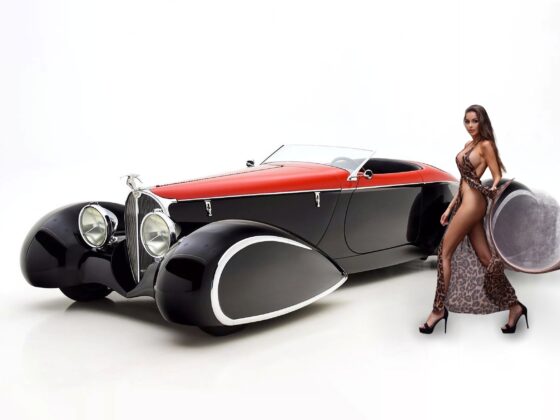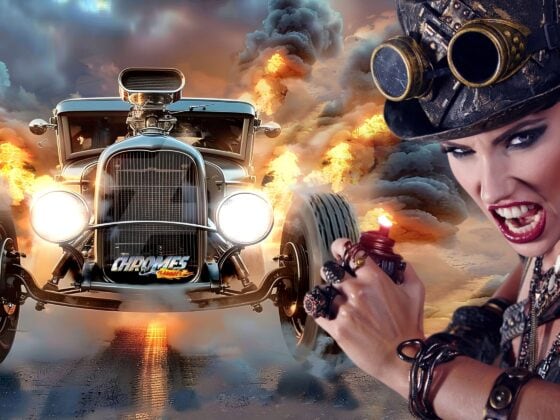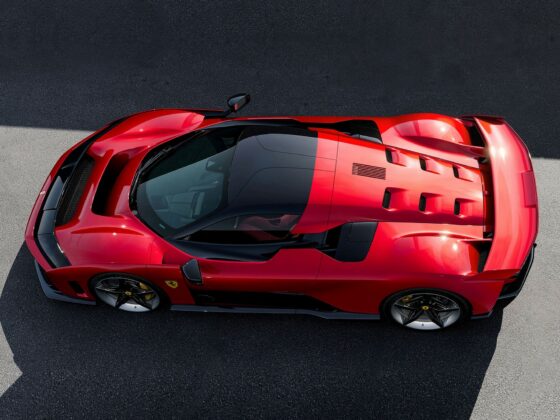Pinkee’29 Ford Roadster Pickup (USA Version)
French Version Here :
https://www.gatsbyonline.com/automobile/pinkee-29-ford-a-roadster-pickup-344569/
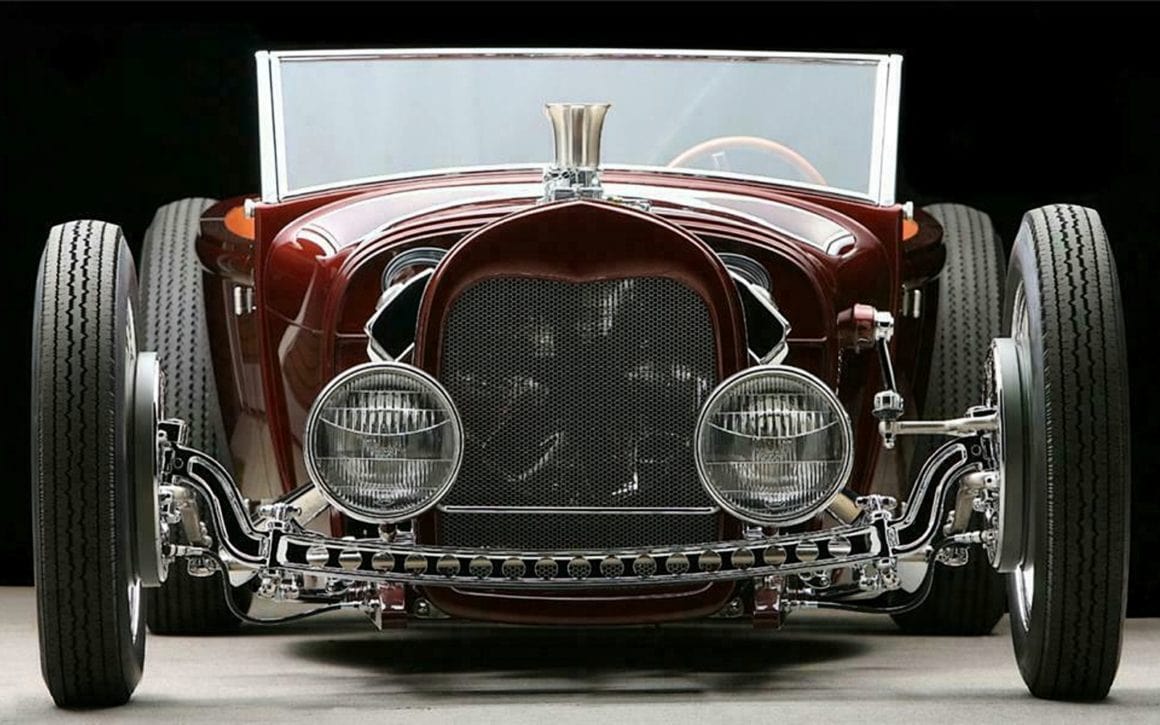
We all know the story of the days when pastel-colored and billet aluminum-laden street rods were getting stale in the late ’80s, but do you know the real facts of how a handful of young guys rewrote history by building basic hot rods in a style that dated back decades before they were even born?
At first it was just a small group of guys who would seek each other out and share notes about what they were gathering at swap meets and bolting together in their garages. This style of traditional cars had actually always been around, but by the dawn of the 1990s, surviving examples from the ’50s and ’60s were becoming more and more difficult to find as historic cars were “improved” all too often.
When these young guys actually started hunting down old rods and vintage period-correct pieces to assemble into their own personal time capsules, something powerful was definitely happening. At first outsiders may have scoffed and giggled, but as every month passed, the original handful of guys turned into hundreds and eventually thousands.
The style was originally nothing more than a reflection of the past, but as soon as the movement was given a name (something to do with the infamous “R” word, which became a blanket description that some would love and many more who actually built respectable traditional rods would vehemently hate), there would be no looking back. Those who weren’t a part of it would be left bobbing in the mighty wake left by the traditional movement. A decade after the style first emerged, traditional-styled cars became the new mainstream, thankfully leaving the pastel colored “smoothsters” as nothing more than a memory (like puberty and leisure suits).
Today, with retro rods as popular as ever, creative mainstream builders like Eric Peratt, owner of Pinkee’s Rod Shop, have taken the style to a whole new level. But before giving any one person all the credit, Eric is the first to point out that the latest effort to come from his shop was not a one-man affair, but a group project guided by a talented assemblage, including the car’s owner, Royce Glader.
Eric and Royce’s starting point was with a totally clean slate, and together they wanted to mix the elements from the nostalgia scene with the detailing of the indoor car show arena while using a minimalist approach to keep things from going too far over the top. They knew first and foremost that the car would be very low and to get there they designed and scratch-built a one-off chassis from 2×4-inch steel tubing.
Extreme lowness called for careful planning to make a suspension system that was both attractive and functional. In front, the transverse spring is tucked up behind the axle and attaches to the custom-built hairpins that mount the axle approximately 13 inches ahead of the spring. The shocks are laid down behind the radiator and connect to the chrome-moly hairpins via a bellcrank setup.
The rear required more creative thought with one-off drilled I-beam components by Oakes Manufacturing (Ft. Collins, Colorado) making up the very trick four-bar system to locate the Dutchman quick-change rearend. The brakes on all four corners are ’40 Ford that have been ingeniously disguised in the Christian Dotson-designed wheels to mimic the ’36-’39 Ford “wide five” drums used on so many early dirt-track racers.
The motivation department required something that fit with the retro vibe, but at the same time it was decided it should not be something you might see on every row at a given car show. A mill that fit the bill was a “baby” Hemi, more commonly known as a Dodge Red Ram, this one being a ’54 model displacing 270 ci. The biggest challenge they would encounter was that almost no aftermarket speed parts were made when the engine was new, and finding these rare gems today is nearly impossible.
One part that was located was an Offenhauser intake manifold that was mated to a trio of Stromberg 97 carburetors. The business end of the engine was machined by Doug’s and assembled by Don Jesser, both located in Ft. Collins. Mated to the retro “Red Ram” is a Camaro T-5 manual transmission spinning a Centerforce clutch and aluminum flywheel, and is controlled by a B&M shifter.
With their low-slung sweeping base completed, the really creative work began when they gathered a few fresh steel pieces from Brookville and started mating them with custom-shaped panels of their own design. All they started with was a ’29 Model A cowl hoop and a ’31 Model A roadster pickup rear cab panel, everything beyond that was scratch-built by Pinkee’s.
Connecting the two pieces are custom doors that are 8 inches longer than stock and sweep along the beltline and up-curved doorjambs to create flow that the stock square units simply could not. A shortened and narrowed ’29 shell sits up front while a handbuilt bed finishes off the rear.
Minimalist thinking really came into play with pieces like the bed where the idea was: “Why have a tailgate if we don’t need one?” says Eric Peratt. “If we had started with an original car, we felt the more pieces we could throw in the dumpster the better.” This approach left a car that is strikingly beautiful with nothing tacked on without purpose.
Inside there is no dash because a pod with the speedo keeps it simple and pared down to just the necessary element. Instead of hiding all the steering components, they were integrated into part of the design and give a very industrial feel to the overall treatment.
If any one element would be more likely to stop you dead in your tracks it would have to be the interior. Pretty much 100 percent scratch-built, the most unique feature might be the bent mahogany and maple floorboards, or it could also be the ’51 Ford speedo mounted inside the modified ’39 Chevy headlight bucket—decide for yourself. For the leather stitchwork, Eric called on P Jay’s (out of Denver) and moved him in-house to be a part of the cohesive team as the car came together.
The concept, crew, and elements gelled so well together that the Model A earned itself the Go For The Gold Fine Nine Award and $20,000 cash at Darryl Starbird’s 41st annual National Rod & Custom Show in Tulsa, Oklahoma. And so it has been written, the next chapter in retro rodding that began with just a few young guys looking to recapture what they only knew from musty and tattered pages in old magazines. What the future holds is hopefully “LOADED” with surprises as interesting as Pinkee’s latest mechanical masterpiece.
It helped with the selection of the engine that owner Royce had a few “baby Hemi” Dodge Red Ram mills stashed away for future use. The ’54 block was filled with 10.5:1 slugs and fully balanced and blueprinted before being topped off with a pair of rebuilt cast-iron heads and an Offenhauser intake running a trio of gennie Stromberg carbs. Spark is supplied by a Joe Hunt magneto and exhaust gasses exit through a pair of headers scratch-built by So Cal Engineering. Backing up the Red Ram is a T-5 manual gearbox that transmits the power to a Dutchman quick-change rearend.
Drivetrain
The chassis designed by the LOADED crew had two requirements—it had to be long and low. At 126 inches (approximately 2 feet longer than stock), the chassis has the long part covered, and gliding just a few inches above the ground checks off the regained lowness. Starting with raw 2×4-inch square tubing, the required large radius bends were handled by Brewer Steel (Greely, Colorado) with the small tighter bends accomplished by chassis expert Art Morrison. For styling points the front ’rails tapered in ever so slightly and were drilled with lightening holes that have been sleeved to restore the original strength to the frame. The front suspension mounts invisibly with the transverse spring tucked up behind the radiator and connected to the custom hairpins that were tested for strength with an ingenious system involving another car, an engine hoist, and a length of chain (believe us, it was serious and scientific!). The rear suspension locating the Dutchman Q.C. is a unique four-bar system using drilled I-beam pieces from Oakes Manufacturing and quarter elliptical springs from POSIES. Brakes on all four corners are traditional ’40 Ford drum units hidden behind the unique wheels.
Chassis
The wheels on LOADED have to be one of the most innovative since Lil’ John whittled his first set out of chunks of aluminum and fathered “billet.” After trying steel wheels and wires, the crew found that what they wanted was the look of the early Ford “wide five” pattern that had seen its widest use on the early dirt tracks because of the added strength the design offered when bumping into other racers at high speeds. Artist Christian Dotson drew up the design and Colorado Custom made the 19-inch wheels a reality in a two-piece design with the centers painted to evoke a magnesium finish and the fully polished outers (3 1/2 inches wide front, 5 inches wide on the rear) to supply the flash. The tires would be hard to identify today after Eric Peratt spent many hours sanding all the markings off the sidewalls. Tire freaks should still be able to identify the fronts as 4.50×19 Excelsiors and 7.50×19 Firestones on the rear by their unique tread patterns and overall heights.
Wheel & Tires
Eric stretched the cab until it fit the driver and looked good and then worked backward from there, creating the new graceful lines. A couple Brookville Roadster Model A roadster pickup pieces got them started, but the majority of the bodywork would be scratch-built by Pinkee’s. From the upward-sweeping custom doors to the shortened bed, each piece was designed with pure purpose and function in mind. Final bodywork and paint was handled by the Soucy Road Body Shop (Amarillo, Texas) with Mark Warick manning the spray gun that laid on the custom PPG Root Beer paint. Headlights from a ’34 Ford Commercial light the way in front, with ’37 Ford taillights keeping anyone from getting too close to the hand-hammered copper trunk in the bed.
Body & Paint
Inside the cockpit, design elements taken from WWII era aircraft as well as early European sports cars are blended with pure essential American hot rod. As Eric says, “Why have a dashboard if you don’t need it?” With that mindset, a simple speedometer pod was crafted from a ’39 Chevy headlight bucket fitted with a ’51 Ford speedo reworked by Classic Instruments with an N.O.S. vintage aircraft tachometer mounted along side it. Expertly stitched leather by P Jay’s (Denver, Colorado) covers the inside panels and a scratch-built pair of bomber style seats. The leather color complements the bent mahogany and maple wood floors inspired by classic Chris-Craft wooden boats. The best seat has to be directly behind the one-off steering wheel whittled by Oakes Manufacturing.
Interior
Fort Collins, Colorado, USA
Royce Glader
1929 Ford roadster pickup
